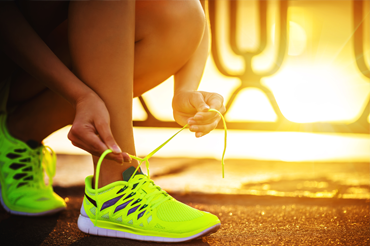
How to Choose Comfortable (and Supportive!) Shoes
| Moaz D.
What do you look for when choosing a shoe? If you’re like most consumers, it’s style first. We’re trained to look for styles that we see our peers wearing, or shoes featured by style magazines or fashion bloggers. For most, comfort and support are a distant second - but that doesn’t mean they should be. Consider the fact that for each mile walked, the arch of the foot alone bears 200,000-300,000 pounds! Whatsmore, continuously wearing shoes that do not provide proper support can cause not only foot pain, but also knee and back problems.
So how should you choose the right shoe - one that's both comfortable and supportive? Let’s take a look.
Prepping To Shop
To ensure a proper fitting, do the following:
- Make sure you’re wearing the socks that you will normally be wearing with the shoe you're shopping for. I.e. nylons or dress socks for work shoes, athletic socks for tennis shoes, etc.
- If possible, go shoe shopping toward the end of the day - your feet are at their longest and widest at this time of day.
- Have your foot professionally measured. Yes - your foot size can change even after you’re done growing!
Shoe Structure
Before trying a shoe on, there are several elements to look and test for structurally to ensure that the shoe offers the right support.
- Your shoe should not be too flimsy or rigid. Hold the heel and toe of the shoe and try to twist it both ways. Your shoes shoes turn slightly with little effort.
- Look for lift. Shoes should have a slight elevation to offer comfort and shock absorption - around 12 mm at the heel at a minimum
The Fit
Now it’s time to test fit. Slide the shoes on and, with the help of your attendant, make sure that they are properly laced. Here’s how to test for fit.
- Shoes should extend 1-1.5cm beyond the end of your toes.
- Wiggle your toes within the shoe. They should be able to move up and down, and side to side.
- Take a couple steps and make sure your heel does not slide against the back of the shoe as you walk.
- For athletic shoes, take a little jog around the store.
The Feel
Our feet are “smart” - that is, sometimes we may not be able to describe exactly what feels comfortable or uncomfortable about a shoe, but our feet know! Walk or jog around to test them out. No one part of your foot should feel extraneous pressure. Here is how your feet should feel in a properly fit shoe.
- Heel: your heel should feel cushioned and supported from the bottom. At the sides, under your ankle, the heel should feel secure as you walk, without being constricted
- Toes: our toes move naturally as we walk. Be sure that your toes can move freely.
- Arch: given the amount of pressure on your arch, proper support for your arch type is very important. Both the inner and outer mid-section of your foot should feel cushioned and supported as you walk. To learn what kind of arch you have and what type of support is required, click here.
Create The Perfect Fit With DIY Custom Insoles
Wouldn’t it be nice if all the stylish shoes you liked also offered the perfect support and fit your foot? The bottom line is, all feet are shaped a little differently and unfortunately, most shoes aren’t made with this in mind. This is where DIY Custom Insoles can help. We offer affordable insoles customized to your exact foot shape that you can make yourself from the comfort of your own home! Ready to “step up” your foot support? Check out our starter kit here to learn more.

